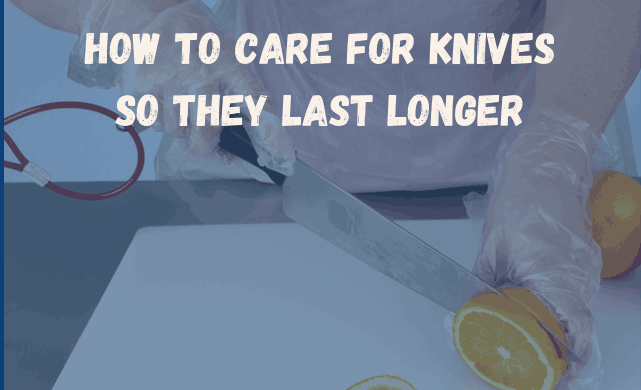Professional chefs know that there are four areas of cutlery maintenance that you need to pay attention to in order to keep your professional knives in top shape. These are Knife Usage, Knife Cleaning, Knife Storage and Knife Blade Calibration. For the correctional kitchen, keeping a set of high security full-tang commercial knives in your operation and maintaining them properly can extend the life or your knives and reduce potential for accidents by keeping the blades sharp and effective.
This easy-to-follow list of do’s and don’ts in each key area in commercial knife care that will prolong the useful life or your knives and keep knives in top condition to reduce any usage risks.
Knife Usage
1. Do use the right knife for the task. Using the correct knife in the right application will help them last longer. An easy to follow rule of thumb is to use a Chef’s Knife to slice anything larger than a tomato and use a paring knife for anything smaller.
2. Do clean your knife while you’re working. Cleaning the knife blade as you are working on a task is a good practice. Having food residue on the blade surface can cause unnecessary friction, reducing the efficiency of your knife. Cleaning your knife as you go also reduces potential for cross contamination between foods.
3. Don’t use a kitchen knife the way you use a cleaver. It will shorten the life of your blade considerably if you try to hack through a turkey joint or saw through frozen vegetables with a chef’s knife or any other knife but a cleaver or chisel.
4. Don’t use your knife as your scraper. If you can’t resist, use the back of the knife to transfer food so that you maintain a sharp edge. Ideally, you should use a food scraper or dough scraper which is made for this task.
5. Do use ‘soft’ cutting boards. Plastic and wood cutting boards are much easier on your knife blades than glass, ceramic or steel. The later are unyielding surfaces which quickly dull your blade.
Knife Cleaning
1. Don’t put knives in the dishmachine. Particles of food in the water moving with great force has the same impact as sandpaper on commercial knives.
2. Don’t toss knives in the sink or onto a hard surface. First and foremost, this is not a save practice and can easily lead to injuries in a busy kitchen. Also, if you do toss your knife somewhere that you’re not looking it can hit a hard surface, like the sink edge or against a pot or pan in the sink, dulling or even damaging the blade.
3. Do wash , dry and safely store knives as soon as you’ve finished using them. The steps are simple: use it, wash it dry it and then store it. Doing this minimizes accidents and damage while ensuring the knife and blade are in good order when you go to use it again.
Knife Storage
1. Don’t store knives in a drawer with other silverware and utensils. First and foremost, this is a safety hazard, imagine reaching into a drawer and unexpectedly finding the edge of a sharp knife blade. This practice can also damage or dull your blade.
2. Do utilize an edge protector. Covering the knife blade with an edge protector when it is not in use or in storage can reduce the risk of any accidental cuts and protect the knife blade from objects that may dull the edge.
3. Store knives in tool locker or cabinet. In the correctional environment, secure knife storage is a no-brainer, but the level of security needed may vary from facility to facility. From locking all your knives or other sharps in a cabinet built by maintenance to adding a security fastener with a unique id number that allows you to inventory all items and then storing them in the Cook’s Brand High Security Tool Locker, however you choose, it just needs to match your facilities security requirements.
Knife Blade Calibration
1. Do hone your knife blade. While sharpening knife blades is somewhat intuitive because you know when your knife is dull, awareness about honing is not as commonplace. Honing will recalibrate your knife blade, helping it to stay sharp, but this isn’t actually sharpening. Honing removes metal spurs or food remnants that you may not even know are there and it leaves your knife with a clean, sharp edge.
2. Hone your knife blade after each use. If you’re working with a knife for long periods of time, it may be a good practice to hone the blade part way through the work to ensure it is cutting efficiently.
3. Sharpen your blades annually. If you are honing your blade as suggested, then sharpening is something you need to do once, and possibly twice a year. One benefit to using a professional knife sharpener is that they know the exact angle that a knife should be sharpened to so that the blade is like new. You can also sharpen in house, and then hone the blade to finish the process.
